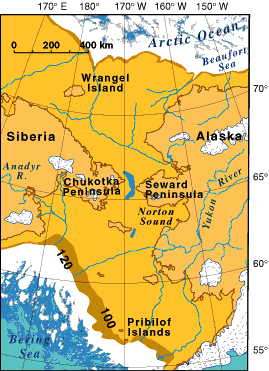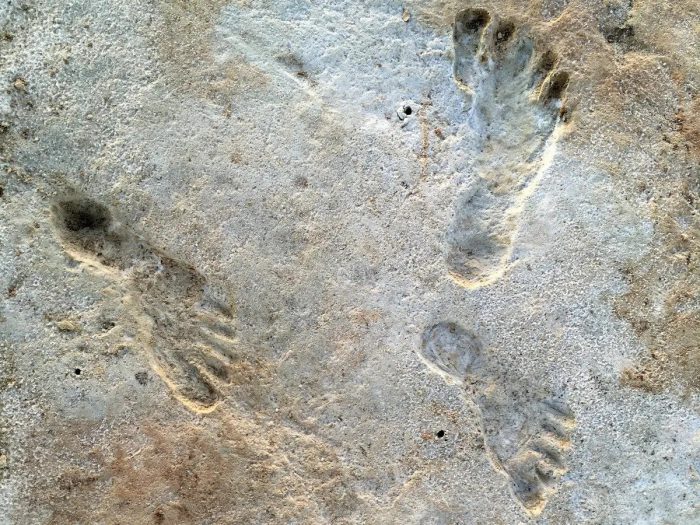A series of incredible fossils in New Mexico have rewritten the books on human history in the Americas North and South America. They are a series of human footprints that date back 23,000 years. That is around 7,000 years earlier (!) than researchers had once believed that ancient people had migrated from Asia to live in this part of the world.
The footprints were found in White Sands National Park—the area is in a spot that archeologists believe was once the shore of an ancient lake. In other words, a place where our ancient ancestors would've visited frequently for water and possibly food as well. Though this moment in history was during the peak of the last Ice Age, this part of North America would've been milder and free of ice.
Rock-solid proof
Really attentive readers of this site (we see you out there!) might remember a story from 2020 about a discovery in a cave in Mexico where archeologists found a series of human-made stone tools that dated back even further than these footprints—approximately 30,000 years. Since those tools were found further south and date back earlier, why all the fuss about these footprints?
This is because while such tools were definitely made by human hands, they are loose objects. They could have been carried by rivers, floods, and other natural events from one location to another. So though they are strong evidence of human settlement, they aren't as rock solid as, say, footprints in solid rock! These fossils mean that there is now no arguing that humans were in North America at least 23,000 years ago. And likely much earlier!
Walking across a bridge

An estimation of Beringia's maximum size. (Wikimedia Commons)
The reason for this comes down to the last Ice Age, a fact that is explained in great detail here. But let's go over it quickly again now! Our species—Homo sapiens—began in Africa around 200,000 years ago. Over the millennia, humans wandered across Europe and Asia as well, but getting to the Americas was impossible thanks to the enormous Pacific Ocean.
Impossible, that is, until the last glacial period. During this time—between 125,000 to 14,000 years ago—much of the world's water froze in enormous ice sheets that covered huge parts of North America, Europe, and Asia. And there was actually a 'land bridge' that connected modern Siberia (eastern Russia) and Alaska called Beringia. Humans were able to travel across this Beringia bridge from one continent to the other. And the settling of the Americas began!
None shall pass
Enormous ice sheets meant that human migration was not always possible. (Getty Embed)
But when exactly? That was always the question.
During the last glacial period, the climate still changed often. This meant that the size of the ice sheets kept changing—when they were at their peak, between 26,500 and 19,ooo years ago, the ice sheets would've been too huge for humans to get past. They were an ice wall across the top of entire continent. So though early humans could cross Beringia during this time, even if they did, they would have been stuck in Alaska, unable to get further south.
This is why experts always believed that humans didn't reach North America until around 16,000 years ago. Humans needed to wait for the ice sheets and glaciers to slowly retreat across the landscape—which took thousands of years—before they could pass.
They crossed before
Which is why this discovery of human footprints—and the stone tools in Mexico—is so huge. 23,000 years ago, the top of North America was an impassable barrier of ice! So the humans that left this footprints in New Mexico were descendants of those who made the journey long before the ice sheets formed!
Which leads to the biggest question of all? How long ago was the first human migration to North America? And how did they get there?
It is certainly earlier than 23,000 years ago. But was there a narrow spot of land along the western coast that they could actually walk down? Though they likely couldn't cross the entire ocean, did they have boats that let them sail down along the coast?
It's a thrilling reminder that for all that we do know about human history, there is so much more left to discover!
 Watch their steps! (Reynolds et al., Science, 2021)
Watch their steps! (Reynolds et al., Science, 2021)









